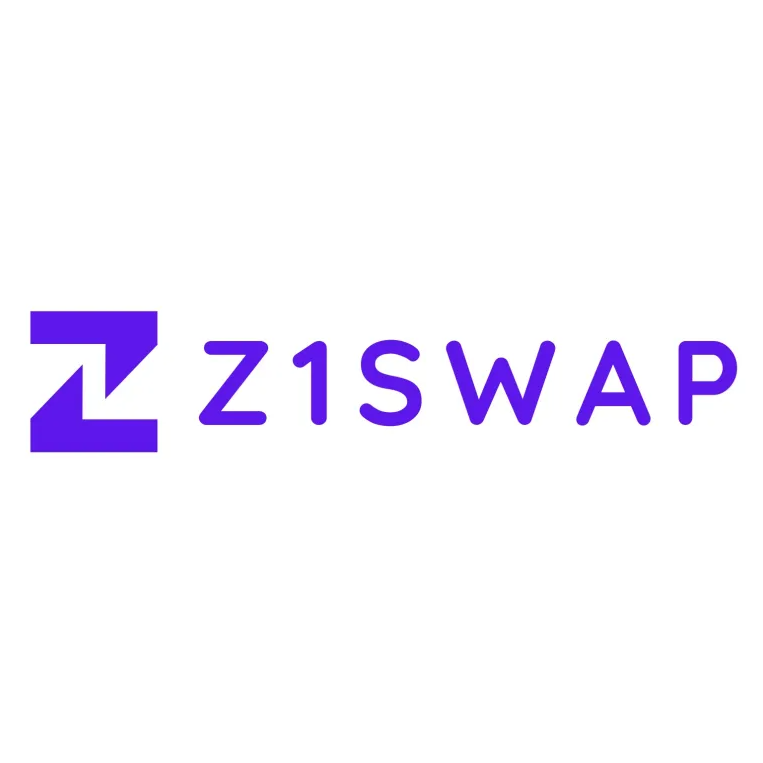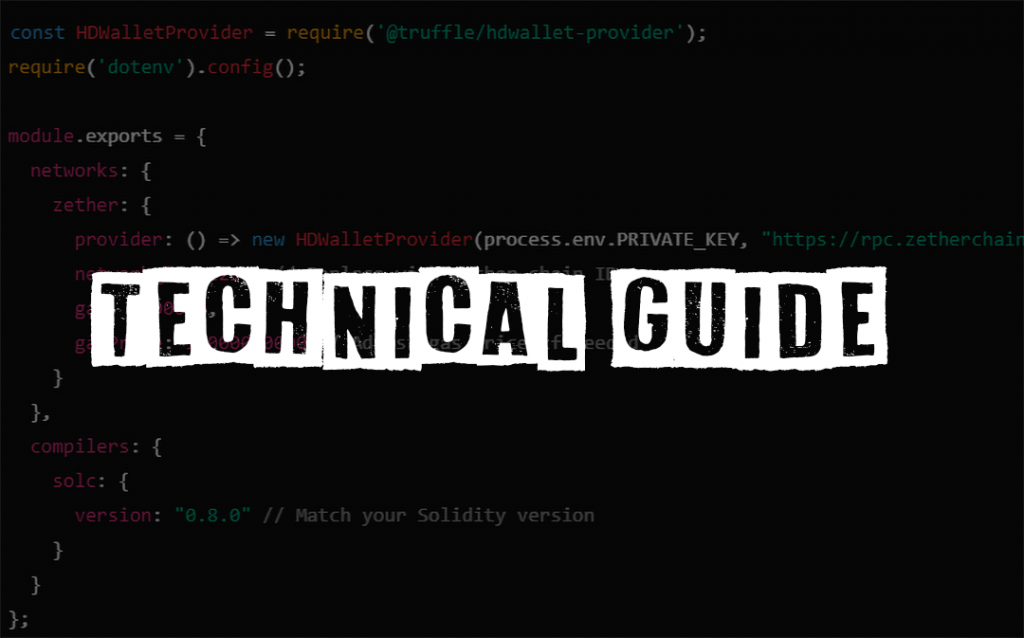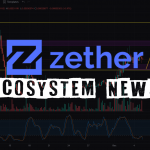Zether Chain, with its growing ecosystem and robust decentralized exchange, Z1Swap, has become a prime destination for entrepreneurs and creators looking to launch their own tokens or memecoins. Whether you’re aiming to build a utility token for decentralized finance (DeFi), enhance the NFT ecosystem, or simply create a fun and engaging memetoken, Zether offers the tools and community support you need to succeed. In this guide, we’ll walk you through the process of creating your token and listing it on Z1Swap.
Why Build on Zether Chain?
Zether stands out for its user-friendly infrastructure, low transaction costs, and compatibility with smart contract standards. It provides the perfect environment for creating tokens with real-world use cases or community-driven projects. The added benefit? Z1Swap, Zether’s flagship DEX, actively supports new tokens with utility and adoption potential by offering listing options.
Step 1: Define Your Token
Before jumping into the technical steps, outline the purpose and utility of your token. Ask yourself:
- What is the token’s use case?
Will it be a governance token, utility token, or purely a memetoken? Examples of utility include powering NFT marketplaces or enabling staking/loans in a DeFi platform.- What problem does it solve?
Does your token bring added value to the Zether ecosystem?- What are its tokenomics?
Define the total supply, distribution strategy, and emission mechanisms (if any). Memecoins often thrive on scarcity, while utility tokens should align with their intended functionality.
Step 2: Develop and Deploy Your Token on Zether
- Choose a Smart Contract Standard:
For most tokens, you’ll want to use Zether’s standard contract templates (compatible with ERC-20 for fungible tokens or ERC-721/1155 for NFTs).- Write the Smart Contract:
Use Zether’s developer tools or online IDEs to write your token contract. You’ll need to include essential details like:
- Token name and symbol
- Total supply
- Decimal precision
- Functions for minting, burning, and transferring
- Test Your Contract:
Deploy the smart contract on Zether’s testnet (ask on Zether.org discord) to identify and fix any issues before launching on the mainnet.- Deploy to Mainnet:
Once tested and finalized, deploy your token to the Zether mainnet. This step requires a wallet connected to the Zether network and a small amount of ZTH for gas fees.

Step 3: Create Liquidity and List on Z1Swap
Z1Swap enables trading and liquidity provision for all Zether-based tokens. Here’s how to get your token listed:
- Pair Your Token with ZTH or Another Token:
To create a market, you’ll need to provide liquidity by pairing your token with $ZTH or another existing token on Z1Swap. You can also start a presale of your token to raise funds for liquidity providing.- Add Liquidity on Z1Swap:
Navigate to the “Liquidity Pools” section of Z1Swap, select your token and its pairing (e.g., ZTH), and deposit an equal value of both tokens to establish liquidity.- Submit for Listing:
If your token has utility or demonstrates strong community interest, Z1Swap may list it as an official token, boosting its visibility and trading volume. Reach out to the Z1Swap team via their private discord server.
Step 4: Build Your Token’s Ecosystem
For your token to gain traction, it’s essential to integrate it into Zether’s growing ecosystem. Here are some ways to add value:
- Launch NFT Projects: Use your token for minting or trading NFTs on Zether-based marketplaces.
- Enable Staking and Rewards: Offer staking programs to reward token holders and create demand.
- Collaborate with Projects: Partner with DeFi or gaming platforms to integrate your token into their ecosystem.
Step 5: Promote and Grow Your Token
- Community Engagement: Build a strong online presence on platforms like Discord, Twitter, and Telegram. Keep your audience engaged with regular updates and community events.
- Marketing and Partnerships: Leverage partnerships within the Zether ecosystem to increase your token’s utility and adoption.
- Ensure Transparency: Publish your tokenomics, roadmap, and team details to establish trust with potential investors and users.
Real Value: The Key to Long-Term Success
While anyone can create a token, the key to standing out is offering real utility. Tokens that provide value—such as facilitating decentralized financial products, powering NFT ecosystems, or enabling community-driven projects—are more likely to gain traction and succeed on Zether and Z1Swap.
With the Zether blockchain’s flexibility and Z1Swap’s support, you have the perfect foundation to launch your token and make an impact in the rapidly expanding crypto space. Start building your future on Zether today!

Guide to Deploying Smart Contracts on Zether Chain
Zether Chain’s compatibility with Ethereum means you can use Ethereum tools and smart contract standards (like ERC-20, ERC-721, or ERC-1155) to create and deploy your tokens. Below is a step-by-step guide to deploying your smart contract on the Zether network, whether it’s a fungible token (ERC-20) or an NFT (ERC-721/1155).
Step 1: Set Up Your Development Environment
Before deploying your contract, ensure you have the right tools installed:
Install Node.js and npm
Download and install Node.js (comes with npm):
Install Hardhat or Truffle
These are development frameworks for Ethereum-compatible blockchains. Install Hardhat (recommended) by running:
npm install --save-dev hardhat
Alternatively, you can install Truffle:
npm install -g truffle
Install a Wallet
Use MetaMask or another Zether-compatible wallet to interact with the network. Add Zether Chain to MetaMask by using the following network details:
- Network Name: Zether
- RPC URL: https://rpc.zether.org/
- Chain ID: 715131
- Currency Symbol: ZTH
- Explorer: https://zthscan.com/
You can find a detailed guide on how to add Zether network to MetaMask here.
Fund Your Wallet with ZTH
You’ll need a small amount of ZTH for gas fees when deploying your contract.
Step 2: Write Your Smart Contract
Use a text editor (e.g., Visual Studio Code or Notepad++) to write your smart contract. Below are examples for ERC-20 (fungible token) and ERC-721 (NFT):
ERC-20 Token Example
Create a file named MyToken.sol:
// SPDX-License-Identifier: MIT
pragma solidity ^0.8.0;
import "@openzeppelin/contracts/token/ERC20/ERC20.sol";
import "@openzeppelin/contracts/access/Ownable.sol";
import "@openzeppelin/contracts/security/Pausable.sol";
contract AdvancedToken is ERC20, Ownable, Pausable {
uint256 public constant MAX_SUPPLY = 100000000 * 10 ** 18; // Max supply of 100 million tokens
constructor() ERC20("AdvancedToken", "ATK") {
_mint(msg.sender, 1000000 * 10 ** decimals()); // Mint 1 million tokens to deployer
}
// Function to mint new tokens, only callable by the owner
function mint(address to, uint256 amount) external onlyOwner {
require(totalSupply() + amount <= MAX_SUPPLY, "Minting would exceed max supply");
_mint(to, amount);
}
// Function to burn tokens from the caller
function burn(uint256 amount) external {
_burn(msg.sender, amount);
}
// Pause the contract (stop transfers)
function pause() external onlyOwner {
_pause();
}
// Unpause the contract (resume transfers)
function unpause() external onlyOwner {
_unpause();
}
// Override _beforeTokenTransfer to enforce pause functionality
function _beforeTokenTransfer(address from, address to, uint256 amount) internal override whenNotPaused {
super._beforeTokenTransfer(from, to, amount);
}
}
Code language: JavaScript (javascript)Key Features:
- Minting: Allows the owner to mint new tokens.
- Burning: Users can burn their tokens to reduce supply.
- Pausing: The owner can pause all transfers in case of an emergency.
- Supply Cap: Ensures total supply doesn’t exceed a maximum limit.
ERC-721 NFT Example
Create a file named MyNFT.sol:
// SPDX-License-Identifier: MIT
pragma solidity ^0.8.0;
import "@openzeppelin/contracts/token/ERC721/extensions/ERC721URIStorage.sol";
import "@openzeppelin/contracts/access/Ownable.sol";
contract AdvancedNFT is ERC721URIStorage, Ownable {
uint256 public nextTokenId;
uint256 public constant MAX_SUPPLY = 10000; // Max supply of 10,000 NFTs
constructor() ERC721("AdvancedNFT", "ANFT") {}
// Mint a new NFT with metadata URI
function mint(address to, string memory tokenURI) external onlyOwner {
require(nextTokenId < MAX_SUPPLY, "Max supply reached");
_safeMint(to, nextTokenId);
_setTokenURI(nextTokenId, tokenURI);
nextTokenId++;
}
// Function to burn an NFT
function burn(uint256 tokenId) external {
require(_isApprovedOrOwner(msg.sender, tokenId), "Caller is not owner nor approved");
_burn(tokenId);
}
// Set new metadata for a token (if allowed)
function updateTokenURI(uint256 tokenId, string memory tokenURI) external onlyOwner {
_setTokenURI(tokenId, tokenURI);
}
}
Code language: JavaScript (javascript)Key Features:
- Minting: Allows the owner to mint new tokens.
- Burning: Users can burn their tokens to reduce supply.
- Pausing: The owner can pause all transfers in case of an emergency.
- Supply Cap: Ensures total supply doesn’t exceed a maximum limit.
Note: this is just an example! You can find many tutorials online for creating ERC-20 (fungible token) and ERC-721 (NFT) smart contracts.
Step 3: Compile Your Contract
- Open a terminal in your project folder.
- Run the following command to compile your contract:
npx hardhat compile
If using Truffle, run:
truffle compile
Step 4: Deploy Your Contract
Create a deployment script to deploy your contract to Zether.
Hardhat Deployment Script
Create a file deploy.js in the scripts folder:
const hre = require("hardhat");
async function main() {
const Token = await hre.ethers.getContractFactory("MyToken"); // Replace with your contract name
const token = await Token.deploy();
await token.deployed();
console.log("Contract deployed to:", token.address);
}
main().catch((error) => {
console.error(error);
process.exitCode = 1;
});
Code language: JavaScript (javascript)Run the deployment script:
npx hardhat run scripts/deploy.js --network zether
To configure Zether in your Hardhat project, add the following to your hardhat.config.js file:
module.exports = {
networks: {
zether: {
url: "Zether_RPC_URL", // Replace with Zether RPC URL
accounts: ["YOUR_PRIVATE_KEY"], // Replace with your wallet private key
},
},
solidity: "0.8.0",
};
Code language: JavaScript (javascript)Truffle Deployment
Create a deploy.js file in the migrations folder:
const MyToken = artifacts.require("MyToken");
module.exports = async function (deployer) {
await deployer.deploy(MyToken);
};
Code language: JavaScript (javascript)Run the deployment script:
truffle migrate --network zether
To configure Zether in Truffle, add it to your truffle-config.js:
module.exports = {
networks: {
zether: {
provider: () => new HDWalletProvider("YOUR_PRIVATE_KEY", "Zether_RPC_URL"),
network_id: "Zether_Network_ID", // Replace with Zether chain ID
},
},
};
Code language: JavaScript (javascript)Step 5: Verify and Test Your Contract
Once deployed, test your contract by interacting with it:
- Use the contract address to interact via Remix or Etherscan-like explorers for Zether.
- Transfer tokens, mint NFTs, and ensure the functions are working as intended.
Step 6: List Your Token on Z1Swap
Follow these steps to list your token on Z1Swap:
- Create Liquidity Pools:
Pair your token with ZTH or another token and provide liquidity. - Launch a Token Presale if you need to raise liquidity.
- Register Your Token:
Contact the Z1Swap team to initiate a formal listing process.
Final Word: The Role of Developers and Ecosystem Growth in Boosting Zether’s Value
The strength of any blockchain network lies in its ecosystem. By actively building and deploying smart contracts, creating innovative dApps, and launching tokens with real-world utility, developers significantly enhance the value of the Zether network. A thriving ecosystem attracts users, fosters adoption, and establishes Zether as a competitive and vibrant blockchain.
Moreover, an active community of developers ensures the continuous evolution of the platform. With every new token, NFT collection, or decentralized financial product, the utility of the Zether chain expands, driving higher demand for its native token (ZTH) and contributing to its long-term sustainability and growth.
By choosing to build on Zether, you’re not just deploying a project—you’re joining a forward-thinking community dedicated to innovation, collaboration, and the decentralized future. Together, we can amplify the value of Zether and position it as a key player in the blockchain revolution.
Links:
Official Zether.org website: https://zether.org/
Official Zether.org bridge: https://zether.org/bridge/
Z1Swap DEX on Zether: https://z1swap.com/ & https://info.z1swap.com/
ZTH Block explorer: https://zthscan.com/
Zether Community Mining Pool: https://pool.zether.cloud/
Zether Community Asian Mining Pool: https://asia.zether.cloud/
Join the pool.Zether.Cloud discord server: https://discord.gg/czVX6VqYRZ




